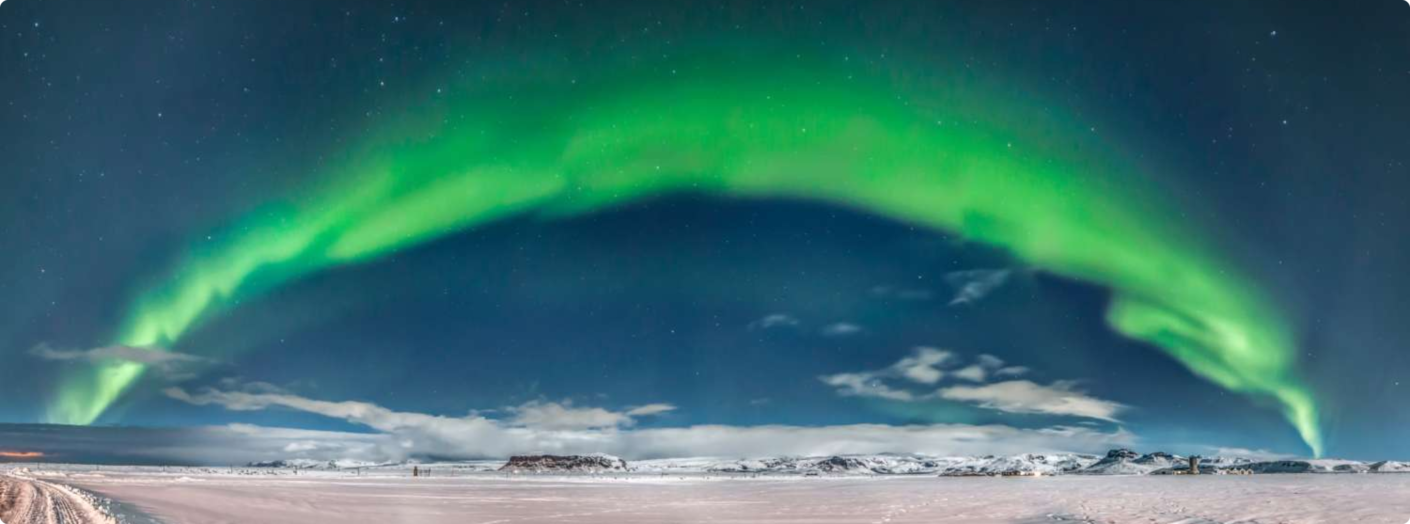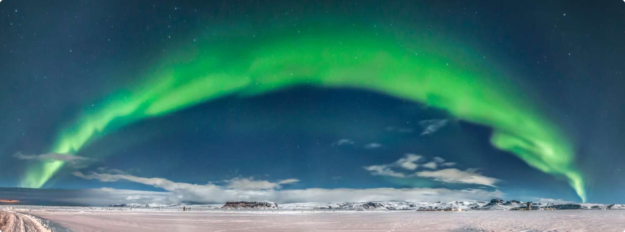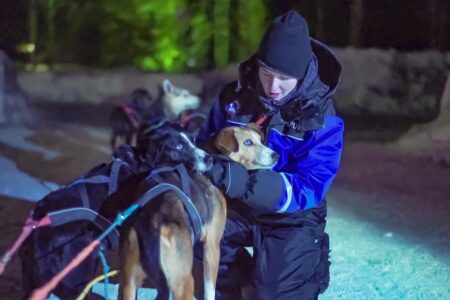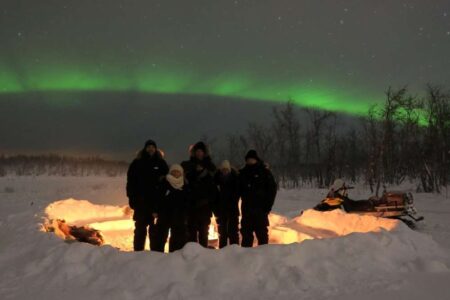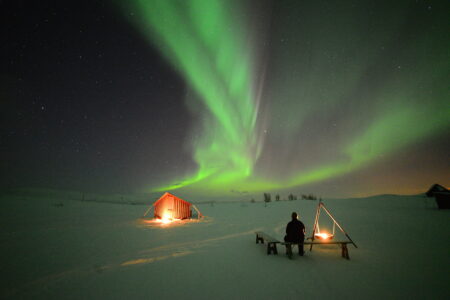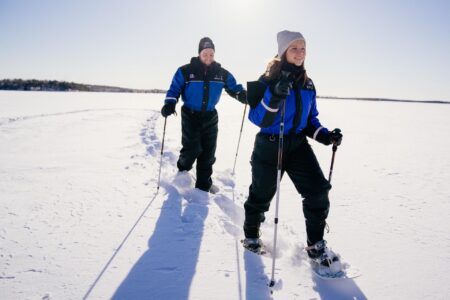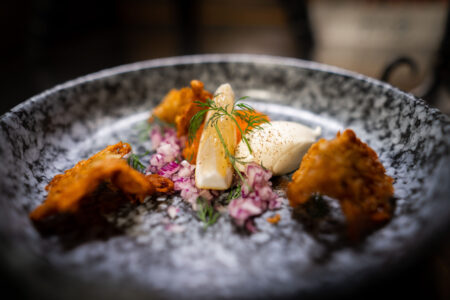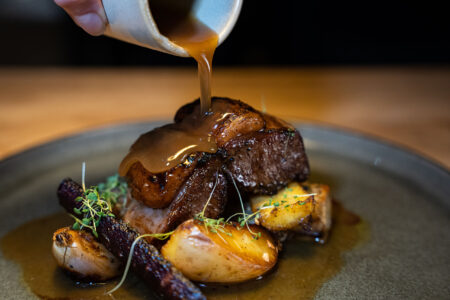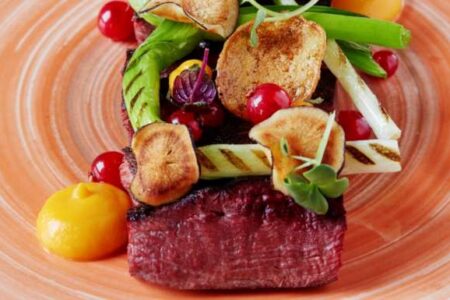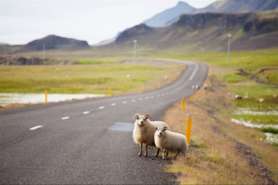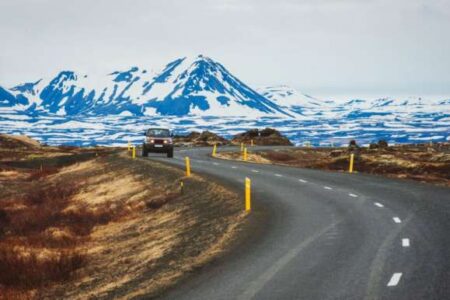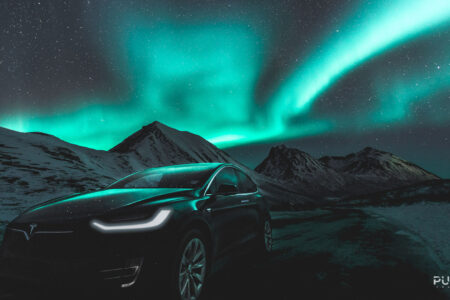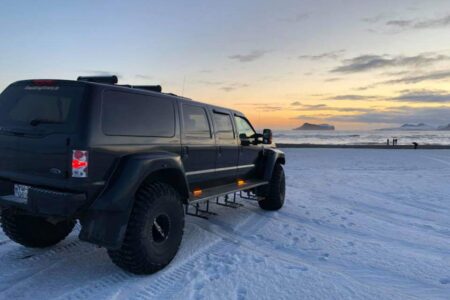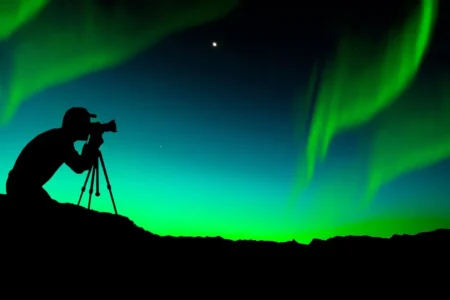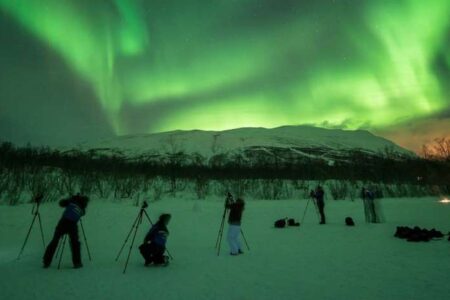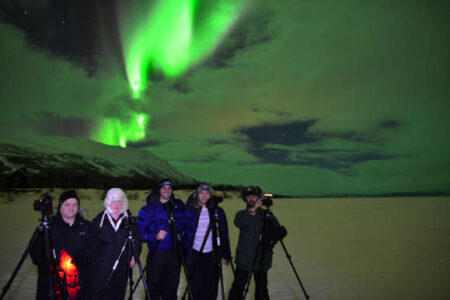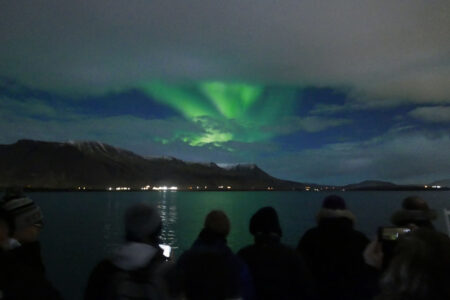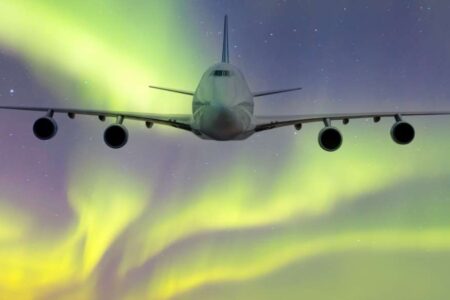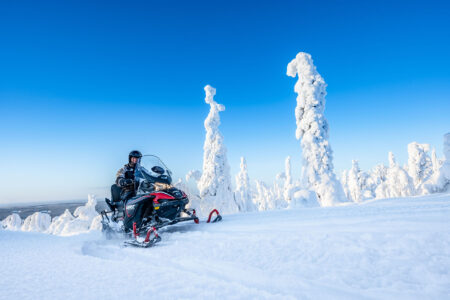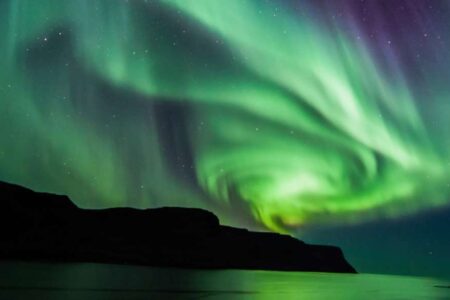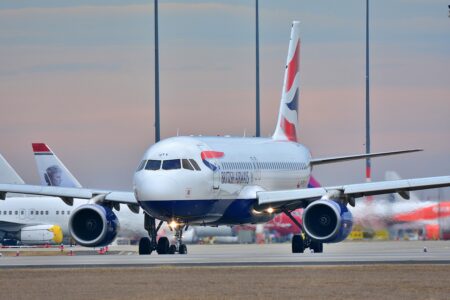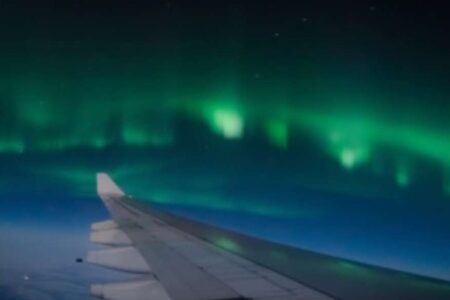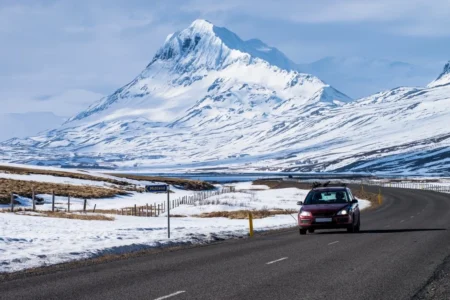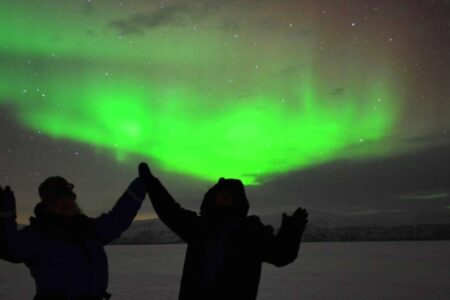This is what makes the Arctic so exciting, and also a little daunting for people travelling here for the first time. There are a lot of unknowns. What should you wear to keep warm? What will the food be like? Is it safe to drive in the Arctic? And what is the best way to get there?
These are the kinds of questions we hear time and again when planning aurora adventures for our clients. So we’ve dedicated this section of our Aurora Academy to the practicalities of Arctic travel.
Here you’ll find Arctic Circle travel tips and FAQs that will help you prepare for your northern lights tour.
Aurora borealis basics: where and when to travel
First things first, when is the best time to plan a trip to the Arctic, and where should you go?
Where to go
The aurora borealis is visible across the “Auroral Oval” — a band that circles the Earth’s magnetic poles. In Europe, that means the best places to see the northern lights are in or near the Arctic Circle — in Iceland and the northern regions of Norway, Sweden and Finland.
Each location has a unique appeal:
- Iceland offers dramatic volcanic landscapes, hot springs and lots of direct flights from both the UK and the USA.
- Norway is home to the beautiful city of Tromsø, the gateway to the Arctic, plus spectacular fjords and mountains.
- Swedish Lapland pairs world-class aurora hunting with bucket-list stays at the Ice Hotel and Tree Hotel.
- Finnish Lapland is famous for its glass igloos and log cabins, and as the home of Santa and his elves.
Cities like Reykjavik, Tromsø and Rovaniemi make a great base for your trip. But the real magic happens when you leave bright lights behind. You have the best chance of seeing the aurora when you travel to dark sky regions, out in the Arctic wilderness.
When to go
The best time to see the northern lights is between September and early April. During these months, long nights provide plenty of darkness for aurora viewing.
For hiking, kayaking and foraging adventures, travel during September or early October, when the landscape is blazing with autumn colour.
For snow-based activities — like snowmobiling, husky sledding and reindeer sleigh rides — travel to the Arctic from December to March.
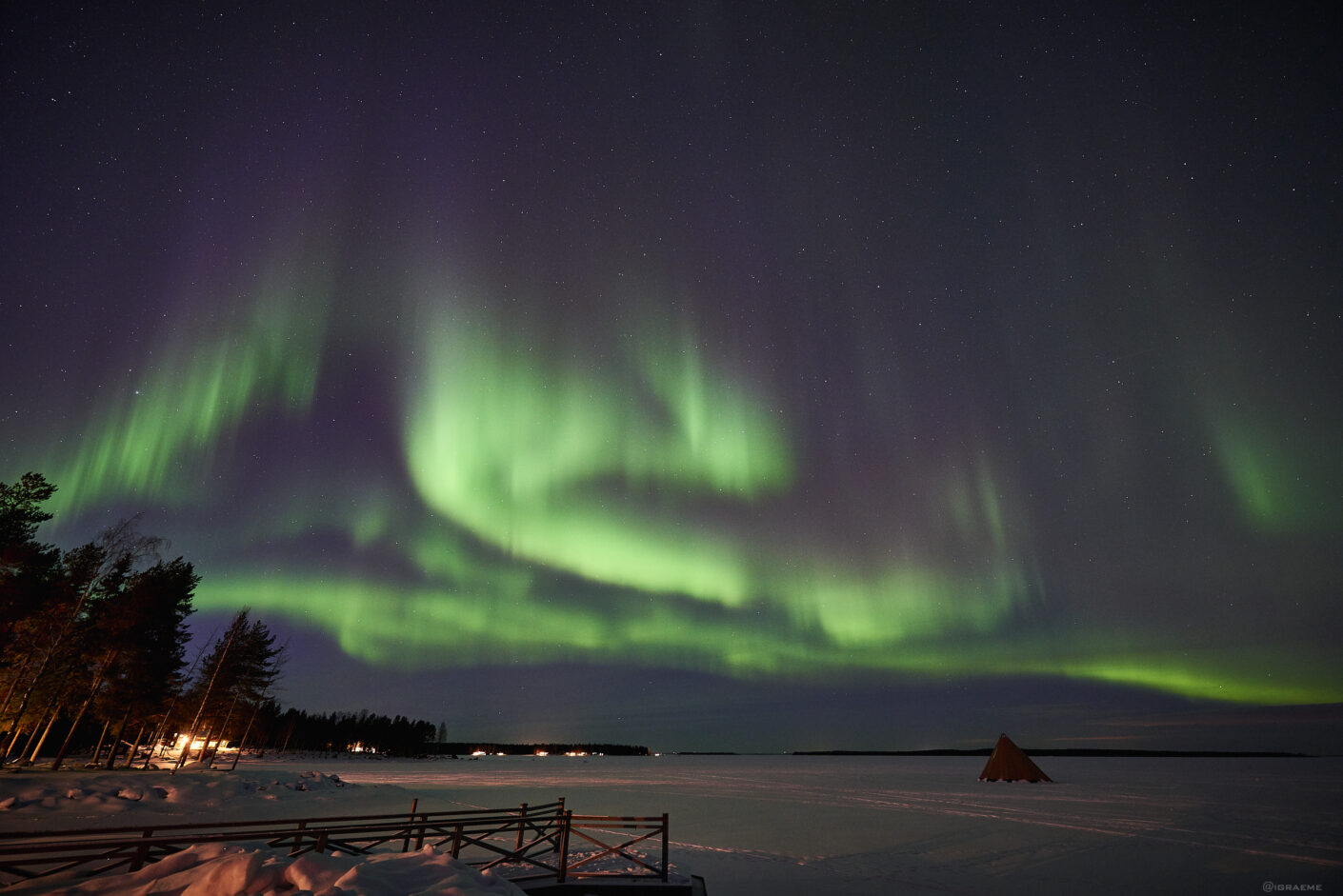
@Graeme Richardson
What to wear in the Arctic
Temperatures in our Arctic destinations drop well below freezing in winter. With wind chill, you need to prepare for temperatures as low as -25˚C. Even in March, landscapes are snowy and temperatures are likely to be in minus figures.
So, when visiting the Arctic Circle, the right clothing is essential. The golden rule is layering. Here’s what you should wear to stay warm and dry:
- A thermal base layer. Thermal leggings and long-sleeved tops, made from merino wool, bamboo, silk, or synthetic activewear materials.
- Middle layers. Lightweight tops, breathable fleeces and woollen jumpers. Another layer for your bottom half is also a good idea.
- Outer layer. A warm, windproof and waterproof layer — a thick winter coat with a cosy hood and a pair of lined, waterproof trousers.
- Outerwear. A hat that covers your ears, a neck warmer, hiking boots, gloves (with a liner glove underneath) and warm socks (with a thin liner sock underneath).
On our northern lights tours to Swedish Lapland and Finnish Lapland, Arctic outerwear – including a snow jacket, trousers and boots — is provided as standard. Arctic outerwear is also provided for cold-weather excursions in Iceland and Norway.
For more advice on Arctic clothing, take a look at our guide: What to wear in the Arctic
Arctic cuisine
Arctic cuisine is rooted in tradition, seasonality and local produce.
When you travel to the Arctic Circle, you can expect hearty soups and stews, roasted game meats, smoked and freshly caught fish, and foraged herbs and berries. Sweet treats, like cinnamon buns and Icelandic kleinur doughnuts, are local favourites, too.
On any aurora holiday package, we cater to your dietary requirements and offer a wide range of dining options.
We can arrange half-board, full-board and self-catering stays. You can also enjoy unique dining experiences — under the stars on a wilderness dinner, fine dining at the Arctic Gourmet Cabin, or on a Norwegian fjord cruise.
Read more about Arctic cuisine: Northern lights dining
Driving in the Arctic
A self-drive holiday in the Arctic is a true adventure — and an opportunity to explore pristine landscapes at your own pace.
Roads in the Nordics are generally well-maintained and sign-posted. In northern regions, they’re largely free from traffic. However, weather conditions are a big consideration on a northern lights road trip — snow and ice can make driving a challenge.
For this reason, we only recommend a self-drive tour in Sweden, Finland, Norway or northern Iceland during September and early October. In southern Iceland, however, you can enjoy a road trip at any time of year.
You can also rest assured that, no matter when you travel, the Aurora Nights team will be at the end of the phone 24/7. So if you need help with directions — or want to rearrange your itinerary around a road closure — we’re here to help.
Read more self-drive tips: Driving in the Arctic
Photographing the northern lights
Capturing the aurora on camera lets you relive the magic again and again. And while you don’t need to be a professional photographer to take beautiful pictures of the northern lights, you do need the right tools.
We recommend the following camera kit:
- A camera you can set to manual mode — mirrorless and DSLR cameras are best
- A wide-angle lens to capture as much of an aurora display as possible
- A tripod to keep your camera steady during long exposures
- Extra camera batteries because the cold drains batteries fast
- Extra SD cards so you always have space for one more shot
In terms of camera settings, photographing the northern lights always involves a little trial and error. But a good starting point is aperture f/2.8 (or the widest your lens will allow), ISO 1600 and shutter speed 15 seconds. You can then adjust according to the aurora display you have in front of you.
On an Aurora Nights holiday, we can also arrange photography excursions with expert guides. Your guide will take you to the best viewing spots and help you capture glowing skies in all their glory.
Read more about taking pictures of the aurora: How to photograph the northern lights.
Flying to the Arctic
Flights aren’t included in an Aurora Nights holiday package. However, our team of northern lights travel specialists can advise you on the best flights to book from your regional airport. You then have the flexibility to choose airlines, flight times and fares that work for you.
The best Arctic airports include:
- Iceland: Reykjavik in the south or Akureyri in the north.
- Norway: Tromsø in the north, either direct or via a stopover in Oslo.
- Sweden: Kiruna or Luleå in Swedish Lapland, usually via a stopover at Stockholm Arlanda.
- Finland: Rovaniemi, Kittilä or Ivalo in Finnish Lapland, either direct or via a stopover in Helsinki.
So what flights are available from the UK and the USA?
Travelling to the Arctic from the UK
There are more flights than ever from the UK to the Arctic, particularly during peak northern lights season.
- UK to Iceland. You can fly direct to Reykjavik from many regional airports. You can also fly direct to Akureyri from Gatwick and Manchester during the aurora season.
- UK to Norway. During the northern lights season, there are direct flights to Tromsø from Heathrow, Gatwick, Luton, Manchester and Bristol.
- UK to Sweden. You can fly to Stockholm Arlanda from many regional airports, then take a connecting flight to Swedish Lapland.
- UK to Finland. There are direct flights from Gatwick to Ivalo and Kittilä, and direct flights from Luton, Manchester, Bristol and Edinburgh to Rovaniemi, during the aurora season.
Read more: Northern lights flights from the UK
Travelling to the Arctic from the USA
If you’re travelling from the USA to see the northern lights in Europe, most flights involve at least one stopover in a European hub. With options including Copenhagen, Amsterdam, Helsinki, Stockholm and Oslo, this makes a great excuse for a city break ahead of your aurora adventure.
However, if you’re keen to head straight to the Nordics, there are some direct flights available.
- USA to Iceland. You can fly direct to Reykjavik in Iceland from many US cities, including New York, Boston, Seattle, Denver, Detroit, Chicago and Orlando.
- USA to Norway. There are direct flights from Newark to Oslo on Scandinavian Airlines.
- USA to Sweden. There are direct flights from Newark to Stockholm on Scandinavian Airlines.
- USA to Finland. You can fly direct to Helsinki from New York, Los Angeles and Dallas. There are also some direct flights available from Miami during northern lights season.
Read more: Northern lights flights from the USA
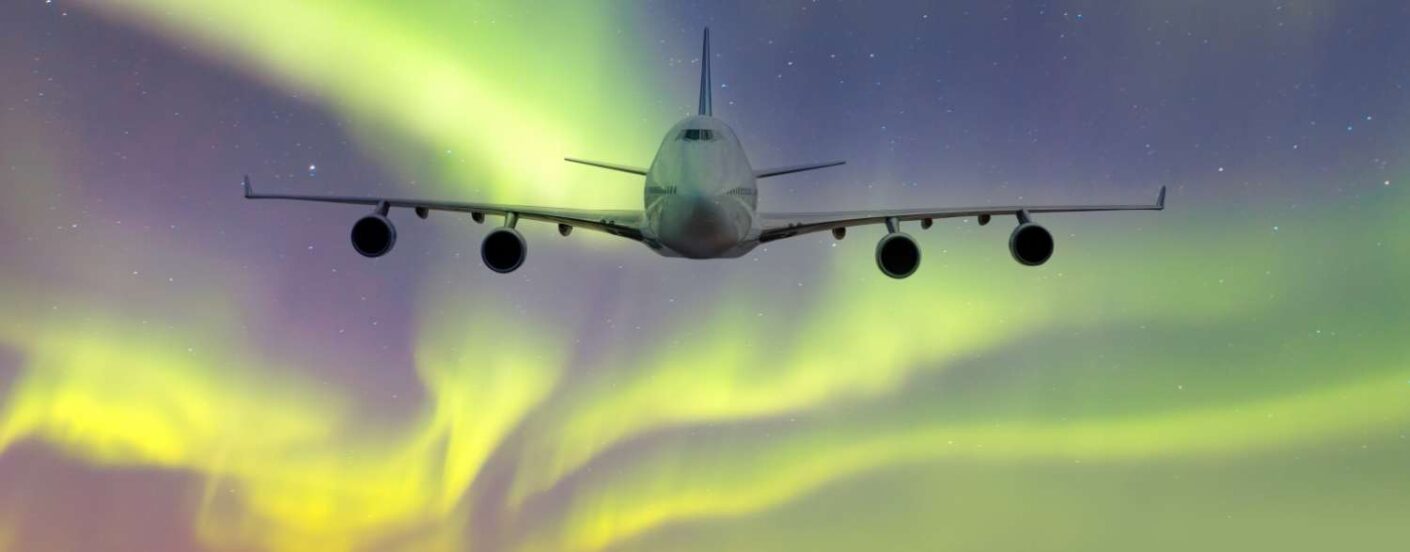
Get advice from the Arctic experts at Aurora Nights
We hope these tips have answered your northern lights holiday questions. But if you’re unsure about any aspect of your Arctic travels, just get in touch with the Aurora Nights team.
Our Arctic experts can advise you on everything — from the best places to buy your thermals to the best restaurants in Reykjavik, the best activities for thrill seekers to the best accommodation for your honeymoon.
Get in touch with the team to ask any additional questions. Or explore our northern lights holiday packages for tour inspiration.
Travelling in the Arctic: FAQs
Will I definitely see the northern lights?
The aurora is a natural phenomenon, so sightings can never be guaranteed. That said, if you visit the Arctic Circle during peak season (September to April) and stay for several nights, your chances are very high. Booking guided aurora excursions also helps — local experts know where skies are clearest and can take you to the best spots at short notice.
Is it safe to travel in the Arctic in winter?
Yes, travelling to the Arctic in winter is perfectly safe. Roads are well-maintained, accommodation is warm and comfortable, and outdoor activities are run by experienced guides. The main things to remember? Wrap up warm and listen to local advice. We also advise against a self-drive tour of the Arctic during winter months.
What happens if bad weather disrupts my plans?
Snowstorms, strong winds or road closures can sometimes affect excursions or travel routes. At Aurora Nights, our team is on hand 24/7 to adjust itineraries and ensure you still get the best possible experience.
How cold does it get in the Arctic?
Winter temperatures in the Arctic can drop to -20°C or lower — and it can feel even colder with the wind chill. Norway and Iceland tend to be significantly warmer than Swedish and Finnish Lapland, but winter temperatures can still drop to around -6°C.
There’s no denying that the Arctic is cold. But with the right Arctic clothing, you can be comfortable even at freezing temperatures.
Do I need special travel insurance when travelling to the Arctic?
Probably, yes. It depends on your insurer. Your travel insurance policy needs to cover you for medical evacuation and for any activities that you’ll be taking part in on your trip to the Arctic. We recommend that you run through your itinerary with your insurer to make sure you’re fully covered.
Do I need to be fit to visit the Arctic Circle?
Because Aurora Nights holidays are tailor-made, we can craft a tour suited to your fitness level. While there’s the option to go hiking, ice climbing or snowmobiling, there are plenty of relaxed Arctic activities to enjoy, too.
You can go snowshoeing or ice fishing. You can also explore breathtaking scenery and chase the aurora on guided jeep tours. Then, relax back at your accommodation, in the hot tub or sauna.
Can I take children on a trip to the Arctic?
Absolutely. There’s plenty of family-friendly accommodation on offer — and lots of activities for kids to enjoy. You can visit Santa and his elves, go husky sledding, go whale watching or embark on an Arctic wildlife safari.
When travelling in the Arctic with young children during winter months, you just need to keep little ones wrapped up warm and plan for shorter outdoor excursions.
What currency will I use in the Arctic?
The official currency in Finland is the euro (EUR). The official currency in Norway is the Norwegian krone (NOK). In Sweden, it’s the Swedish krona (SEK). And in Iceland, it’s the Icelandic krona (ISK).
Our most popular northern lights holidays
Our northern lights holidays start from £4,000 per person — including activities and excluding flights. A 6-8 night luxury aurora holiday ranges from £6,000 to £9,000 per person.
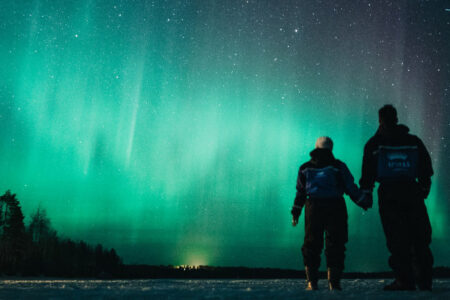
Classic short breaks in Finland
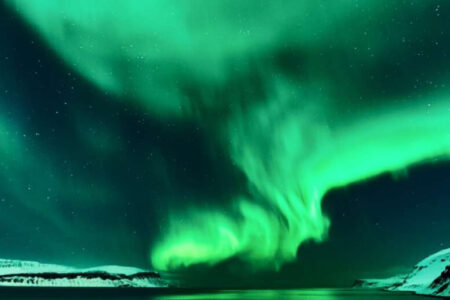
Classic Short Breaks in Iceland
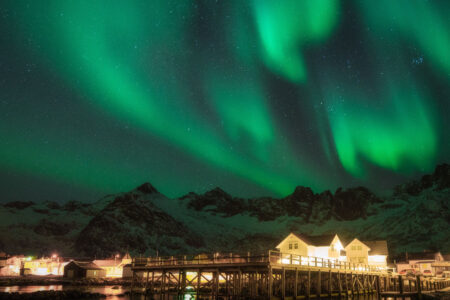
Classic Short Breaks in Norway
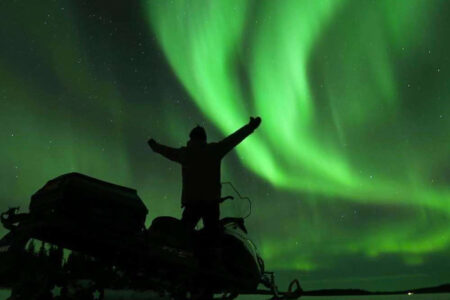
Classic short breaks in Sweden
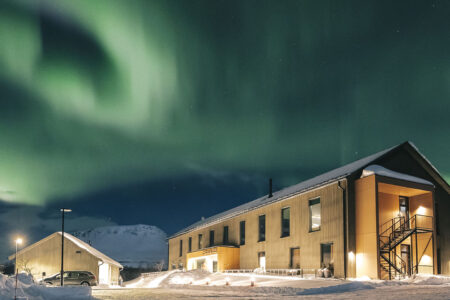
Exclusive aurora holidays in Finland
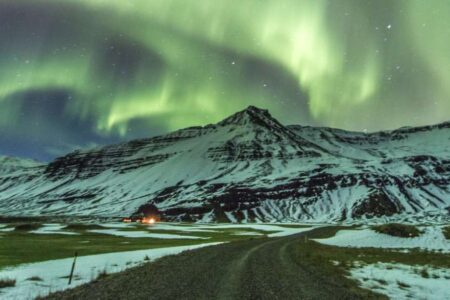
Exclusive aurora holidays in Iceland
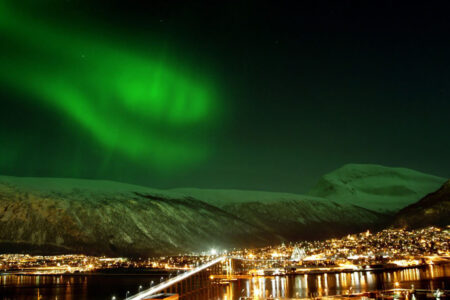
Exclusive aurora holidays in Norway
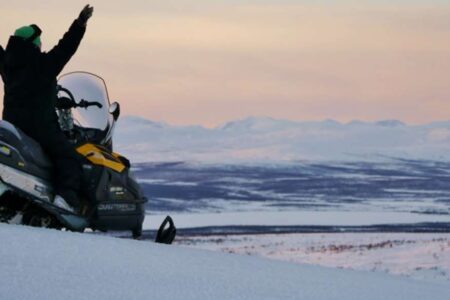
Exclusive Northern Lights holidays in Sweden
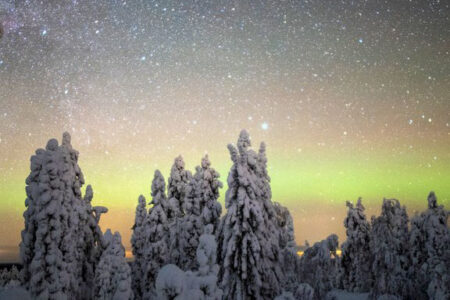
Glass igloo holidays in Finland
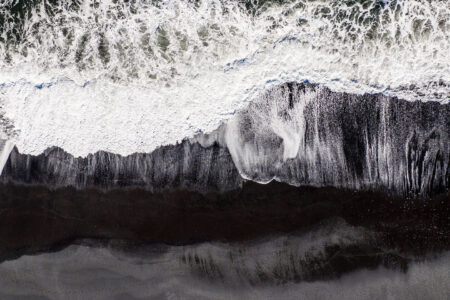
Self-drive tours in Iceland
Ready for an aurora adventure?
Book with Aurora Nights, the northern lights holiday experts. Tell us what’s on your wish list and we’ll plan a personalised aurora tour, just for you.
